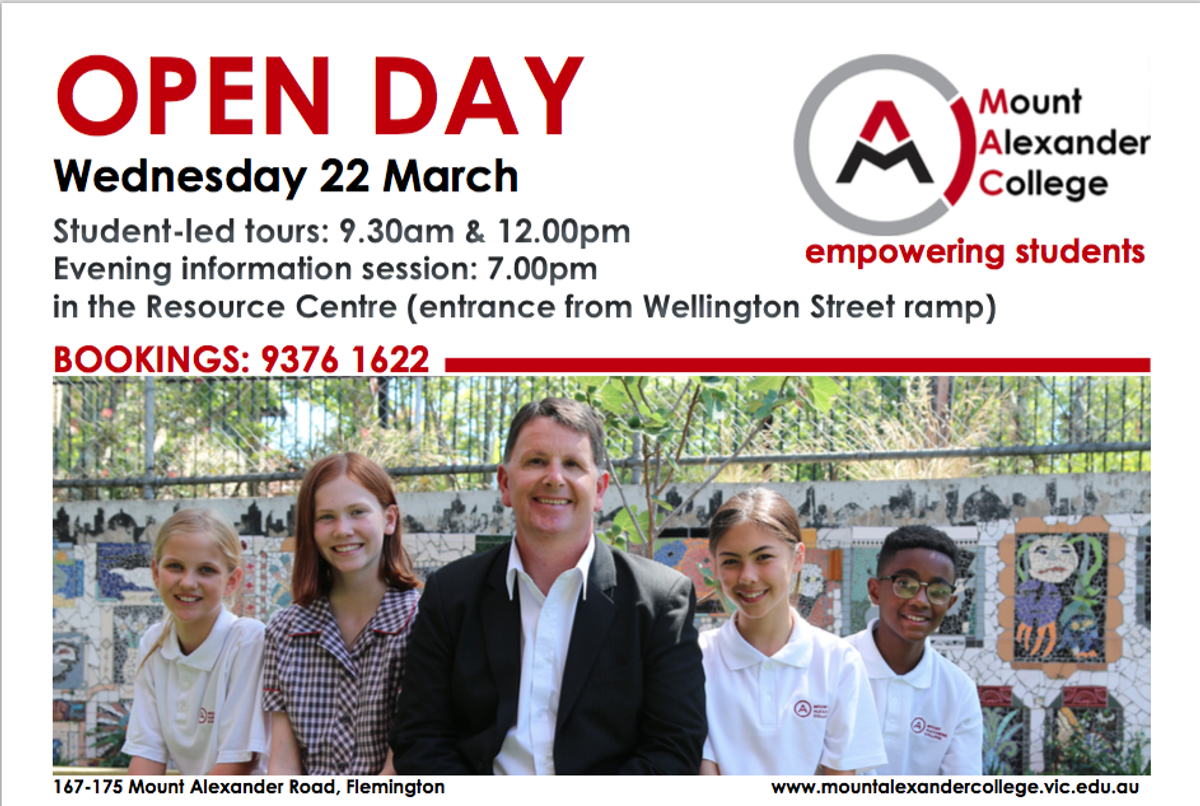Education News

Transition News - Secondary School Expo
MPW would like to invite Year 5 and Year 6 students (along with their parents) to the annual Secondary School Expo which will be held in the School Gym.
Date: Wednesday 22 March 2017
Time: 4:00 to 7:00pm
Location: MPW Gym
This is an excellent opportunity to speak to staff and students from the Secondary colleges in the area.
Further information will be supplied closer to the event. In the meantime please reserve the date and time in your diary.
Digital Disruption
Digital disruption signals imminent and significant change to the nature of work.
These impending changes are relevant for children currently in their primary school years.
When information and analytical software are readily accessible, the real questioning begins when consideration is given to how to immerse and engage children in a learning environment rich in questioning, problem solving and problem posing.
An education that allows children to experience and address these higher order problems, to be curious, creative and critical in their thinking is imperative in meeting the challenges of growing up in a world experiencing technological and social change. Victoria has recently become the first jurisdiction in the world to set targets for critical and creative thinking.[i] This could be seen as especially pertinent in light of the recent decline in PISA [Program for International Student Assessments] results for Australian school children.[ii]
[i] http://www.jamesmerlino.com.au/media-releases/world-first-education-target-for-victorian-students/
[ii] ‘PISA assesses the extent to which 15 year old students, near the end of their compulsory education, have acquired key knowledge and skills that are essential for full participation in modern societies’ [PISA 2015 Results (Volume II): Policies and Practices for Successful Schools, p. 25]
Below is a summary of the 6 levels of mathematical proficiency in PISA 2015
At Level 6 [669], students can conceptualise, generalise and utilise information based on their investigations and modelling of complex problem situations, and can use their knowledge in relatively non-standard contexts. They can link different information sources and representations and flexibly translate among them. Students at this level are capable of advanced mathematical thinking and reasoning. These students can apply this insight and understanding, along with a mastery of symbolic and formal mathematical operations and relationships, to develop new approaches and strategies for attacking novel situations. Students at this level can reflect on their actions, and can formulate and precisely communicate their actions and reflections regarding their findings, interpretations, arguments, and the appropriateness of these to the original situation.
At Level 5 [607], students can develop and work with models for complex situations, identifying constraints and specifying assumptions. They can select, compare and evaluate appropriate problem-solving strategies for dealing with complex problems related to these models. Students at this level can work strategically using broad, well- developed thinking and reasoning skills, appropriate linked representations, symbolic and formal characterisations, and insight pertaining to these situations. They begin to reflect on their work and can formulate and communicate their interpretations and reasoning.
At Level 4 [545], students can work effectively with explicit models for complex, concrete situations that may involve constraints or call for making assumptions. They can select and integrate different representations, including symbolic, linking them directly to aspects of real-world situations. Students at this level can utilise their limited range of skills and can reason with some insight, in straightforward contexts. They can construct and communicate explanations and arguments based on their interpretations, arguments and actions.
At Level 3 [482], students can execute clearly described procedures, including those that require sequential decisions. Their interpretations are sufficiently sound to be a base for building a simple model or for selecting and applying simple problem-solving strategies. Students at this level can interpret and use representations based on different information sources and reason directly from them. They typically show some ability to handle percentages, fractions and decimal numbers, and to work with proportional relationships. Their solutions reflect that they have engaged in basic interpretation and reasoning.
At Level 2 [420], students can interpret and recognise situations in contexts that require no more than direct inference. They can extract relevant information from a single source and make use of a single representational mode. Students at this level can employ basic algorithms, formulae, procedures or conventions to solve problems involving whole numbers. They are capable of making literal interpretations of the results.
At Level 1 [358], students can answer questions involving familiar contexts where all relevant information is present and the questions are clearly defined. They are able to identify information and to carry out routine procedures according to direct instructions in explicit situations. They can perform actions that are almost always obvious and follow immediately from the given stimuli.
PISA results for Australian school children declined from 504 in 2012 to 494 in 2015.

